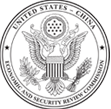×
Filter Results
Filter Results
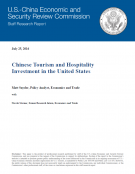
Staff Paper
Chinese tourism to the United States has expanded rapidly over the past ten years. From 2005 to 2015, Chinese tourism spending in the United States has increased eight-fold, and in 2015 contributed $27 billion to the U.S. economy. Today, tourism constitutes a significant part of the United States’ exports to China, making up 57 percent of U.S. service exports to China in 2015 and 12 percent of U.S. exports to China overall. This increase has been driven by rising Chinese incomes which have made China the largest source of international tourists in the world. While many Chinese travel to the United States for traditional tourism, an increasing number of Chinese students travel to the United States for secondary and tertiary education, with China now contributing more students to the United States than any other country. As Chinese tourism has increased, Chinese investment in U.S. hotels and hospitality facilities has grown by a factor of 9 from 2013 to 2015 following looser Chinese rules on outbound investment. This paper examines the rise in Chinese tourism to the United States and Chinese investment in the U.S. hospitality sector and the consequences of these trends for the United States.
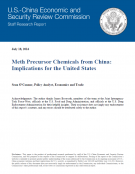
Staff Paper
Over the last 15 years, Mexican drug organizations have replaced domestic producers as the main manufacturers and distributors of meth in the United States. While Mexican cartels produce the majority (around 90 percent) of meth used in the United States, around 80 percent of precursor chemicals used in Mexican meth come from China. Precursor chemicals are increasingly being shipped from China to Mexico and Central America, where they are manufactured into meth, transported across the southern border of the United States, and brought into southwestern states—Texas, Arizona, and California—before being shipped across the country. Despite international counternarcotic efforts, meth precursor manufacturers in China continue to thrive because the country’s vast chemical and pharmaceutical industries are weakly regulated and poorly monitored. This report examines the extent of China’s illicit chemical production and the effectiveness of U.S. and international efforts to reduce precursor chemical flows.
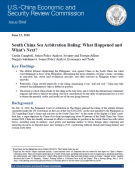
Issue Brief
On July 12, 2016, the arbitral tribunal adjudicating the Philippines’ case against China in the South China Sea ruled overwhelmingly in favor of the Philippines, determining that major elements of China’s claim—including its nine-dash line, recent land reclamation activities, and other activities in Philippine waters—were unlawful. Predictably, China reacted negatively to the ruling, maintaining it was “null and void.” China may take assertive and inflammatory steps to defend its position. The extent to which China abides by the ruling in the long term, and to which the international community supports and seeks to enforce the ruling, will have consequences for the utility of international law as a tool to ensure the peaceful, stable, and lawful use of the seas going forward.

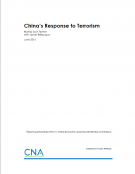
Contracted Research
The report, prepared for the Commission by Murray Scot Tanner and James Bellacqua at CNA, examines the Chinese government’s efforts to combat terrorism by analyzing China’s definition and perception of its terrorist threat, its institutional infrastructure, strategy, and policies for combating terrorism, international counterterrorism cooperation efforts, and the opportunities for, and challenges of, U.S.-China cooperation on countering terrorism.

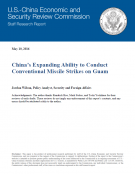
Staff Paper
China’s ability to conduct conventional cruise and ballistic missile strikes on Guam is growing, even as the island’s strategic importance to the United States is increasing. This report examines the reasons behind China’s development of new conventional weapons that can reach Guam, the array of forces it could employ against Guam in a potential conflict, and policy options for the United States to consider in response. Accuracy limitations and platform vulnerabilities render the current risk to U.S. forces on Guam in a potential conflict relatively low, but China’s commitment to continuing to modernize its strike capabilities indicates the risk will likely continue to grow going forward.

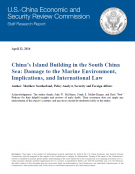
Staff Paper
From December 2013 to October 2015, China built artificial islands with a total area of close to 3,000 acres on seven coral reefs it occupies in the Spratly Islands in the southern part of the South China Sea. Although dredging, land reclamation, and the building of artificial islands are not unique to China, the scale and speed of China’s activities, the biodiversity of the area, and the significance of the Spratly Islands to the ecology of the region make China’s actions of particular concern. In addition to damage to the reefs, China’s island building activities have negatively impacted fisheries in the immediate area of the reclamation sites, and could negatively impact the health of fisheries in the coastal areas of the South China Sea. The building of these artificial islands will almost certainly lead to increased Chinese fishing in the surrounding waters, which could raise the risk of a clash between Chinese fishing boats and those of other claimant countries. Moreover, China’s island building activities may have violated some of its environmental commitments under international law; the ongoing case initiated by the Philippines at the Permanent Court of Arbitration in The Hague regarding China’s claims and activities in the South China Sea is considering this possibility.
